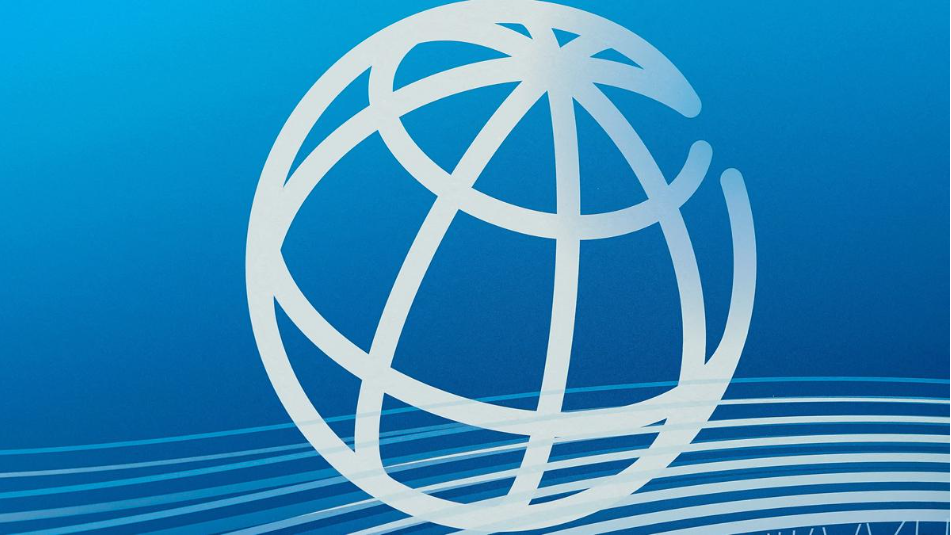Trading Up India’s economic narrative is undergoing a significant transformation, marked by resilient growth, increased trade engagement, and reforms aimed at fostering a more robust, inclusive economy. The World Bank’s India Development Update offers a comprehensive analysis of India’s economic performance, key reforms, and prospects for the future. In its latest edition, the report underscores India’s progress, especially in areas such as trade, fiscal policy, and digitalization, while also addressing the challenges that lie ahead in sustaining momentum.
This article delves into the findings of the India Development Update, exploring the economic landscape of the country, its trade dynamics, policy reforms, and potential areas of growth. As India continues to rise as a global economic powerhouse, understanding the driving forces behind this growth is critical to grasp the opportunities and challenges that shape the nation’s trajectory.
India’s Economic Growth: A Strong Foundation
India has emerged as one of the fastest-growing major economies globally, despite facing external headwinds such as the COVID-19 pandemic, global supply chain disruptions, and geopolitical tensions. The World Bank’s India Development Update highlights that India’s GDP is projected to grow steadily, buoyed by strong domestic consumption, infrastructure development, and a rebound in private investment.
The report outlines the following key drivers behind India’s economic growth:
- Resilient Domestic Demand: India’s large consumer base, driven by a growing middle class and rising incomes, has sustained domestic demand. This is particularly evident in sectors such as retail, e-commerce, and real estate. Domestic consumption has remained a cornerstone of India’s economic growth, even during periods of global uncertainty.
- Infrastructure Investment: The Indian government’s focus on infrastructure development, including roads, ports, railways, and urban infrastructure, has stimulated economic activity and created job opportunities. Flagship programs such as Gati Shakti, which aims to enhance infrastructure efficiency and connectivity, have further strengthened India’s growth prospects.
- Private Investment Rebound: Following the pandemic-induced slowdown, private sector investment in India has shown signs of recovery, particularly in manufacturing, real estate, and renewable energy. The Production-Linked Incentive (PLI) scheme has been instrumental in attracting investment in key sectors such as electronics, pharmaceuticals, and automobiles.
- Exports Growth: India’s trade performance has been impressive, with exports reaching record highs. The country’s export basket has diversified, with a growing share of high-value goods such as electronics, chemicals, and pharmaceuticals. The World Bank report notes that India’s focus on boosting its manufacturing capabilities and integrating into global value chains has paid off.
Trade as a Growth Engine
One of the standout themes in the India Development Update is the role of trade as a critical engine of growth for India. The World Bank highlights that India’s trade-to-GDP ratio has improved significantly in recent years, reflecting the country’s deepening integration into the global economy. This trend is attributed to several factors, including trade policy reforms, enhanced manufacturing capacity, and a focus on export-led growth.
1. Diversification of Export Markets
India’s export strategy has evolved, with the country diversifying its export markets beyond traditional partners such as the United States and the European Union. India has increasingly engaged with emerging markets in Asia, Africa, and Latin America, reducing its reliance on a few key markets. This diversification has provided India with greater resilience against external shocks and has opened up new avenues for growth.  for more information click on this link
for more information click on this link
2. Focus on Value-Added Exports
India has made a concerted effort to shift its export composition from low-value commodities to high-value, technologically advanced products. The PLI scheme, for instance, has encouraged domestic production of electronics, pharmaceuticals, and other high-value goods, which have seen robust export growth. This shift is crucial for enhancing India’s competitiveness in global markets and moving up the value chain.
3. Integration into Global Value Chains
The World Bank emphasizes India’s growing integration into global value chains (GVCs), particularly in sectors such as electronics, textiles, Trading Up and automobiles. By becoming a key player in GVCs, India has enhanced its export potential while attracting foreign investment. The report notes that India’s participation in global supply chains has increased its exposure to global markets, contributing to its export growth.
4. Trade Agreements and Partnerships
India’s engagement in regional trade agreements and economic partnerships has further strengthened its trade performance. Initiatives such as the India-UAE Comprehensive Economic Partnership Agreement (CEPA) and ongoing negotiations for free trade agreements (FTAs) with countries such as the UK and Australia are expected to boost India’s trade volumes. These agreements aim to reduce tariffs, Trading Up streamline trade processes, and enhance market access for Indian exporters.
Key Reforms Shaping India’s Economic Landscape
The India Development Update underscores the importance of recent policy reforms that have contributed to India’s economic resilience and growth. Some of the most impactful reforms include:
1. Goods and Services Tax (GST)
The implementation of the Goods and Services Tax (GST) in 2017 has been a game-changer for India’s economy. By simplifying the indirect tax system and creating a unified market, Trading Up GST has reduced tax-related barriers, improved ease of doing business, and enhanced tax compliance. The World Bank highlights that GST has been instrumental in streamlining the tax regime and boosting revenue collection, which in turn has allowed the government to invest in infrastructure and social programs.
2. Insolvency and Bankruptcy Code (IBC)
The Insolvency and Bankruptcy Code (IBC) has played a crucial role in resolving distressed assets and improving the ease of doing business in India. The World Bank points out that the IBC has helped address the problem of non-performing assets (NPAs) in the banking sector, Trading Up thereby unlocking capital for productive investment. The IBC has also strengthened creditor rights and provided a more transparent framework for debt resolution.
3. Financial Inclusion through Digitalization
India’s digital revolution has been a key enabler of financial inclusion. The India Development Update highlights the role of initiatives such as Jan Dhan Yojana, Aadhaar, Trading Up and the Unified Payments Interface (UPI) in expanding access to financial services for millions of unbanked citizens. Digitalization has transformed the way financial transactions are conducted, making it easier for individuals and businesses to access credit, savings, and insurance products.
The adoption of digital payment platforms like UPI has been particularly significant, with the volume of digital transactions witnessing exponential growth. This has not only enhanced financial inclusion but also reduced the informal economy’s size, thereby improving tax compliance and increasing government revenues.
4. Labour Reforms
India has undertaken comprehensive labor reforms aimed at improving the ease of doing business and creating a more flexible labor market. The consolidation of 29 labor laws into four labor codes — dealing with wages, industrial relations, Trading Up social security, and occupational safety — has simplified labor regulations and reduced the compliance burden for businesses. The World Bank notes that these reforms are expected to create a more conducive environment for job creation and investment in labor-intensive sectors such as manufacturing.
Challenges Ahead
While the India Development Update paints a positive picture of India’s economic trajectory, Trading Up it also highlights several challenges that need to be addressed to sustain growth:
1. Inflationary Pressures
One of the major risks identified in the report is inflation. India has experienced rising inflationary pressures due to global supply chain disruptions, higher commodity prices, Trading Up and domestic demand recovery. The World Bank cautions that persistently high inflation could erode consumer purchasing power and dampen economic growth. Managing inflation through appropriate monetary policy measures will be crucial in the coming months.
2. Employment Generation
Despite strong economic growth, employment generation remains a key challenge for India. The report notes that while sectors such as IT and e-commerce have seen robust job creation, traditional sectors like agriculture and manufacturing have lagged behind. Ensuring that economic growth translates into sufficient employment opportunities, Trading Up particularly for India’s burgeoning youth population, will be essential for sustaining long-term prosperity.
3. Infrastructure Gaps
While India has made significant progress in infrastructure development, the report highlights that infrastructure gaps still exist, particularly in rural areas. Inadequate transport, water, Trading Up and sanitation infrastructure in certain regions continue to hinder economic development. Addressing these gaps will require sustained public and private investment.
4. Climate Change and Sustainability
The World Bank emphasizes the need for India to balance its growth aspirations with environmental sustainability. As the country seeks to accelerate industrialization and urbanization, it faces the challenge of mitigating the environmental impact of these processes. The report underscores the importance of adopting green technologies, Trading Up promoting renewable energy, and strengthening climate resilience to ensure sustainable growth.
The Road Ahead: Policy Recommendations
To build on its economic achievements and address the challenges outlined in the India Development Update, Trading Up the World Bank offers several policy recommendations:  for more information click on this link
for more information click on this link
- Strengthening Fiscal Policy: The World Bank recommends that India continue to maintain a sound fiscal policy framework, focusing on prudent government spending and revenue generation. Fiscal consolidation will be key to managing inflationary pressures and ensuring mac roeconomic stability.
- Enhancing Human Capital: Investments in education, healthcare, and skills development will be critical for enhancing India’s human capital and boosting productivity. The World Bank suggests that India prioritize policies that improve access to quality education and healthcare, particularly in rural areas.
- Promoting Inclusive Growth: To ensure that the benefits of economic growth are widely shared, Trading Upthe report recommends that India focus on inclusive policies that address income inequality and social disparities. This includes expanding social safety nets and providing targeted support for marginalized communities.
- Accelerating Digital Transformation: The World Bank emphasizes the need to further leverage digital technologies to drive growth and financial inclusion. Expanding digital infrastructure and promoting digital literacy, Trading Up particularly in rural areas, will be essential for fostering innovation and ensuring broad-based economic participation.
- Sustainable Development: The report highlights the importance of integrating sustainability into India’s growth strategy. Adopting clean energy solutions, reducing carbon emissions, Trading Up and enhancing climate resilience will be critical for achieving long-term sustainability.
Conclusion
The World Bank’s India Development Update provides an in-depth analysis of India’s economic progress and the factors driving its growth. While the country has made significant strides in trade, infrastructure development, and digitalization, Trading Up challenges such as inflation, employment generation, and climate sustainability remain. By addressing these challenges through sound policy reforms and targeted investments, India can continue to build on its success and position itself as a global economic leader in the years to come.
India’s journey of economic transformation is far from over, but the insights provided by the World Bank highlight a clear path forward, Trading Up one that is marked by resilience, innovation, and a commitment to inclusive and sustainable growth. ALSO READ:- Gaza Conflict: U.S. Pushes for Truce Deal as Netanyahu Rejects Concessions in Indirect Negotiations with Hamas





мостюет https://www.mostbet6006.ru .
1win зайти http://1win6001.ru .
1-win https://familyclub.borda.ru/?1-6-0-00002163-000-0-0-1743051813/ .
мостбет авиатор мостбет авиатор .
1вин вход 1вин вход .
1vin pro http://1win6001.ru/ .
скачать mostbet скачать mostbet .
1win ставки официальный сайт http://1win6001.ru .
мосбет http://www.mostbet6006.ru .
wan win http://www.familyclub.borda.ru/?1-6-0-00002163-000-0-0-1743051813 .
официальный сайт 1 вин официальный сайт 1 вин .
1 vin официальный сайт https://www.balashiha.myqip.ru/?1-12-0-00000437-000-0-0-1743258848 .
1win rossvya http://alfatraders.borda.ru/?1-0-0-00004932-000-0-0-1743258210 .
1вин кыргызстан 1win6049.ru .
1win kg 1win kg .
1win официальный сайт войти https://www.1win6049.ru .
1vin http://alfatraders.borda.ru/?1-0-0-00004932-000-0-0-1743258210/ .
1wiun 1wiun .
1win вход 1win вход .
1 win pro balashiha.myqip.ru/?1-12-0-00000437-000-0-0-1743258848 .
1win rossvya http://alfatraders.borda.ru/?1-0-0-00004932-000-0-0-1743258210 .
1 win официальный сайт вход https://alfatraders.borda.ru/?1-0-0-00004932-000-0-0-1743258210 .
скачать mostbet на телефон скачать mostbet на телефон .
1вин официальный сайт 1вин официальный сайт .
1win скачать kg http://www.obovsem.myqip.ru/?1-9-0-00000059-000-0-0-1743051936 .
aviator mostbet svstrazh.forum24.ru/?1-18-0-00000136-000-0-0-1743260517 .
1вин официальный мобильная obovsem.myqip.ru/?1-9-0-00000059-000-0-0-1743051936 .
1 win официальный сайт http://1win6050.ru/ .
скачать mostbet на телефон https://www.svstrazh.forum24.ru/?1-18-0-00000136-000-0-0-1743260517 .
мостбет https://svstrazh.forum24.ru/?1-18-0-00000136-000-0-0-1743260517/ .
сайт 1win официальный сайт вход сайт 1win официальный сайт вход .
1вин про 1вин про .
игра 1вин http://1win6051.ru/ .
1vin pro 1win6050.ru .
1вин кг http://1win6051.ru/ .
1 win казино 1win6052.ru .
1 win kg http://1win6051.ru .
1вин кг https://1win6052.ru/ .
мостбет кыргызстан скачать мостбет кыргызстан скачать .
1win ракета https://1win6052.ru/ .
1win.online https://www.1win6052.ru .
игра 1вин http://1win6053.ru/ .
mostbets mostbets .
мостбет промокод http://mostbet6030.ru/ .
1 vin 1 vin .
1вин официальный сайт мобильная http://1win6053.ru .
casino 1 win https://1win1001.top .
1wi 1wi .
1win.pro http://1win5011.ru .
jocuri de noroc online moldova http://1win5011.ru/ .
jocuri de noroc online moldova http://1win5011.ru/ .
înregistrare 1win http://1win5011.ru/ .
1 win https://1win6009.ru .
mostbet kg скачать на андроид mostbet kg скачать на андроид .
1win скачать последнюю версию http://www.1win6009.ru .
мостбет кг https://mostbet6012.ru .
1вин https://www.1win6009.ru .
ванвин 1win6009.ru .
motbet https://mostbet6012.ru/ .
Для успешного продвижения вверх по карьере понадобится наличие официального диплома о высшем образовании. Заказать диплом института у проверенной организации: diplomv-v-ruki.ru/diplom-kupit-texnicheskij/
установка натяжных потолков в липецке potolkilipetsk.ru .
банкротство физлиц http://www.bankrotstvo-grajdan.ru .
Где заказать диплом с архивной записью без посредников? Нажмите
В 2025 году наличие диплома всё ещё остаётся основным фактором при приёме на работу, повышении по службе или получении лицензии. И если у вас нет необходимого документа — это не повод терять время на долгие годы учебы.
✅ Решение есть — заказ диплома, полностью соответствующего оригиналу:
С печатями, подписями, голограммами,
Внесение в архив (по запросу),
Любой ВУЗ, колледж — по всей России и СНГ.
Кому может пригодиться?
Вас выгнали, но обучение практически завершено?
Поступили на хорошую работу, но нет “корочки”?
Нужен диплом для лицензирования, повышения, тендера?
Мы работаем без предоплаты (по договору или поэтапно) и гарантируем полную конфиденциальность. У нас нет шаблонов — каждый документ готовится индивидуально, с учётом всех нюансов.
Наши гарантии:
Диплом, неотличимый от оригинала
Настоящие данные выпускника (по вашей анкете)
Быстрая и надежная доставка по России и СНГ
Юридически грамотно оформленный договор (по желанию)
Мы сотрудничаем с квалифицированными специалистами, которые знают, как должен выглядеть официальный документ — вплоть до мельчайших деталей. У нас много лет опыта и более random00..3999] довольных клиентов.
банкротство граждан bankrotstvo-grajdan.ru .
ипотека под материнский капитал crediteurasia.ru .
Thanks for the article. Here’s more on the topic https://cultureinthecity.ru/
Thanks for the article. Here’s more on the topic https://great-galaxy.ru/
Thanks for the article. Here’s more on the topic https://orenbash.ru/
Thanks for the article. Here’s more on the topic https://yarus-kkt.ru/
Thanks for the article. Here is a website on the topic – https://kreativ-didaktika.ru/
Заказывал услуги хакера. Всем рекомендую. Очень помог. Заказывал – Вернуть деньги КОНТАКТЫ СПЕЦИАЛИСТА: YourKod@pm.me
Related article https://fishexpo-volga.ru/kupit-okna-v-spb-kachestvenno-vygodno-i-s-garantiej-ot-titan-okna-2/
Here is another site on the topic best free books on kindle unlimited
ushp-fundament-pod-klyuch-499.ru .
Website https://imgtube.ru/
Website – https://lostfiilmtv.ru/
Website https://photo-res.ru/ .